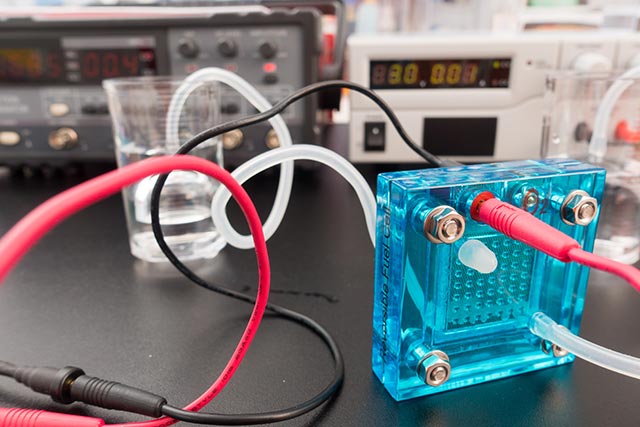Powering battery-free devices: Researchers develop flexible “rectennas” that convert Wi-Fi signals into electricity
05/15/2019 / By Edsel Cook

For years, researchers have been developing “rectenna” that could turn Wi-Fi emissions into electrical energy so that electronic devices would be freed from the constraints of batteries and power cords. But the rectenna presented by an MIT-led team was the first example that could be flexed in any direction.
Rectenna can turn any alternating current electromagnetic waves – including Wi-Fi signals – into direct current electricity. What makes the MIT rectenna unique is the ultra-thin rectifier attached to its radio-frequency antenna.
Made out of 2D semiconductor and measuring a few atoms thick, the rectifier converts AC electromagnetic waves into a DC voltage. The electricity can be used to directly power electronic devices or charge batteries.
The rectenna itself lacks any power source or battery. It works passively in collecting and converting Wi-Fi signals into DC electricity. Not only is it flexible, but it can also be produced in a roll-to-roll method, making it easy to cover sizable amounts of surface area.
Testing showed that the MIT rectenna can convert the 150 microwatt output of most Wi-Fi signals into 40 microwatts of DC power. That output can run a simple mobile screen or several silicon chips. (Related: New magnet technology called HyMag could pave the way for affordable, eco-friendly electric- and hybrid-powered vehicles.)
Molybdenum disulfide ensures flexibility and efficiency of new “rectenna”
Earlier rectifiers were made from silicon or gallium arsenide, which are inflexible and expensive if used in large amounts. Other materials could be flexed, but are unable to absorb electromagnetic waves at the gigahertz frequencies – such as Wi-Fi signals.
The rectenna developed by Grajal and his teammates uses molybdenum disulfide in its rectifier. A newly developed 2D material that measures three atoms in thickness, molybdenum disulfide is one of the thinnest semiconductors in the world.
The atoms of molybdenum disulfide will rearrange themselves into a structure called a Schottky diode if they come into contact with specific chemicals. When this happens, the material will stop acting like a semiconductor and start acting like a metallic material.
In its Schottky diode arrangement, molybdenum disulfide displays a much lower level of parasitic capacitance than commercially available flexible rectifiers. It stores far less electrical charge that will disrupt the speed of the electronic circuit.
“By engineering MoS2 into a 2-D semiconducting-metallic phase junction, we built an atomically thin, ultrafast Schottky diode that simultaneously minimizes the series resistance and parasitic capacitance,” says MIT researcher Xu Zhang, the first author of the study. “Such a design has allowed a fully flexible device that is fast enough to cover most of the radio-frequency bands used by our daily electronics, including Wi-Fi, Bluetooth, cellular LTE, and many others.”
As long as there is Wi-Fi, rectennas can provide power to electronic devices
Its developers believe that the new rectenna could be integrated into flexible electronics and wearable electronics. Their invention could also be used in medical equipment, “internet of things” devices, and flexible smartphones.
Technical University of Madrid (UPM) researcher Jesús Grajal suggests that the rectenna could also run implantable medical devices, such as pills that contained tiny electronics. These pills would be swallowed by a patient, and they would transmit data from inside that person.
“Ideally you don’t want to use batteries to power these systems, because if they leak lithium, the patient could die,” explains Grajal, who served as the co-author of the published study. “It is much better to harvest energy from the environment to power up these small labs inside the body and communicate data to external computers.”
Future research aims to improve the power efficiency of the MIT-developed rectenna. It needed to match the 50 to 60 percent efficiency of rectenna with silicon and gallium arsenide rectifiers.
Sources include:
Tagged Under: breakthrough, discoveries, electricity, electronic devices, electronics, flexible electronics, goodtech, innovation, inventions, mobile devices, new tech, science and technology, semiconductors, WiFi, wireless energy
RECENT NEWS & ARTICLES
NewEnergyReport.com is a fact-based public education website published by New Energy Report Features, LLC.
All content copyright © 2018 by New Energy Report Features, LLC.
Contact Us with Tips or Corrections
All trademarks, registered trademarks and servicemarks mentioned on this site are the property of their respective owners.


















